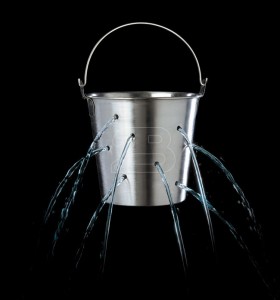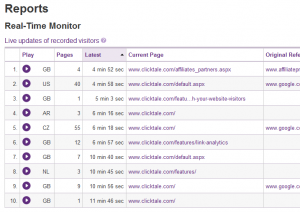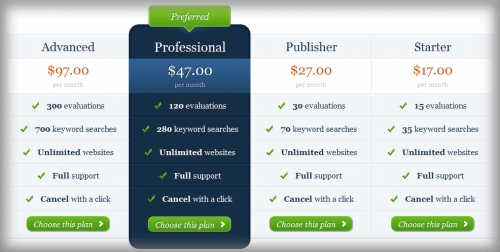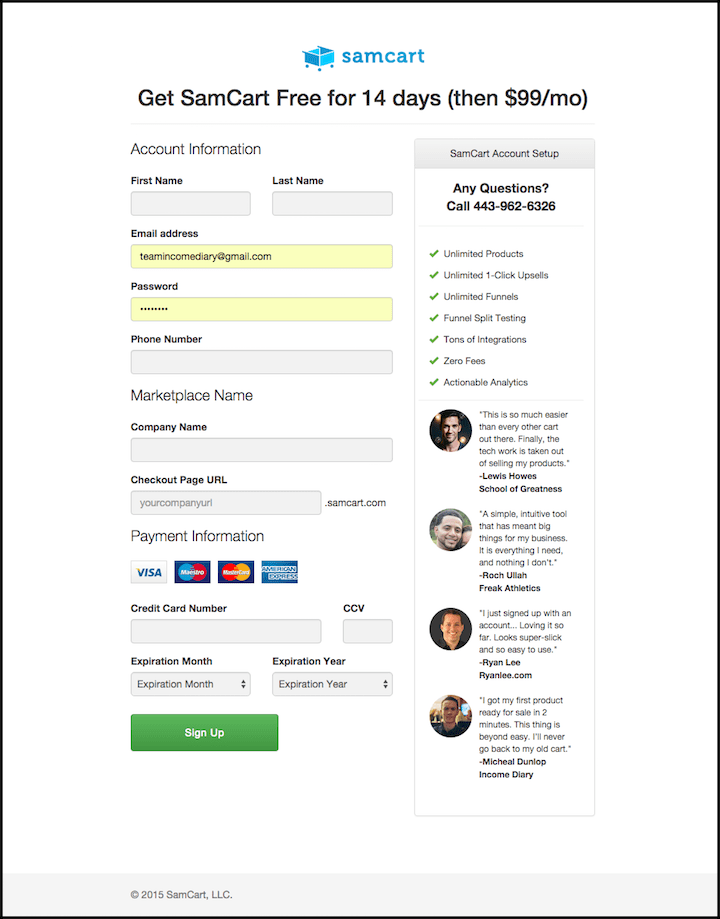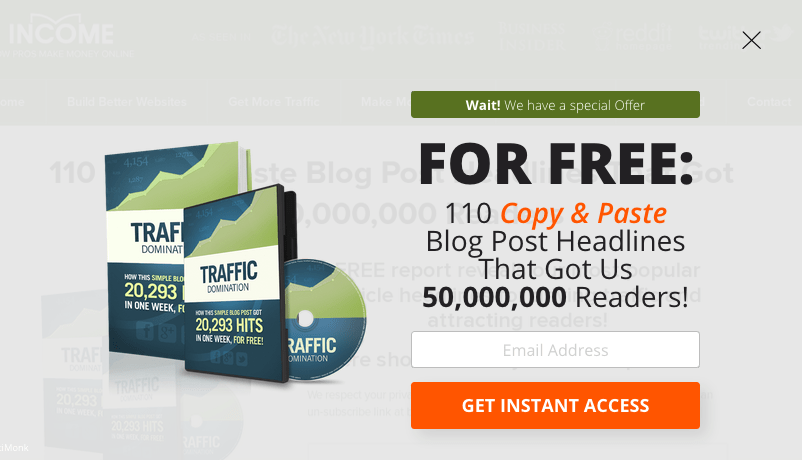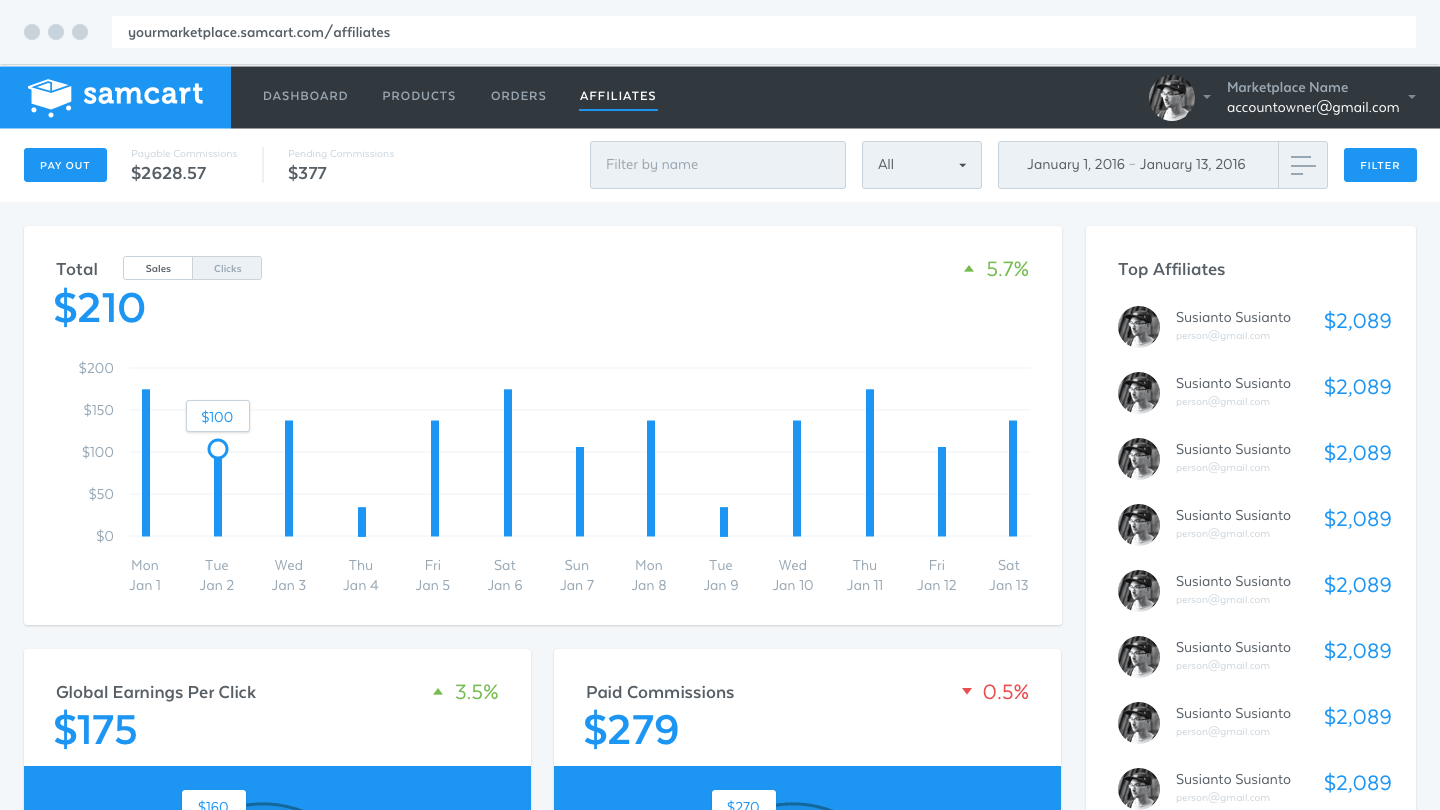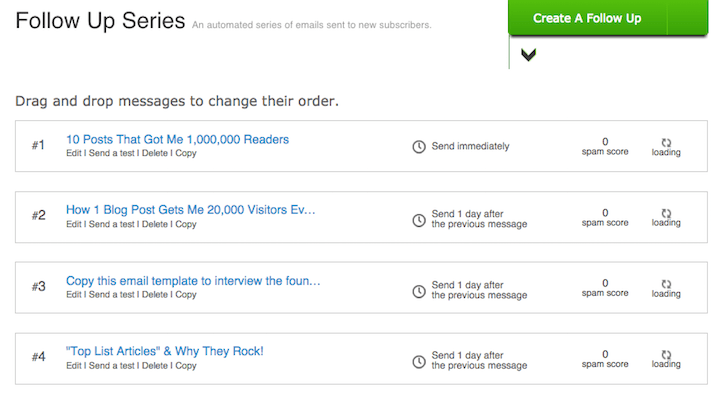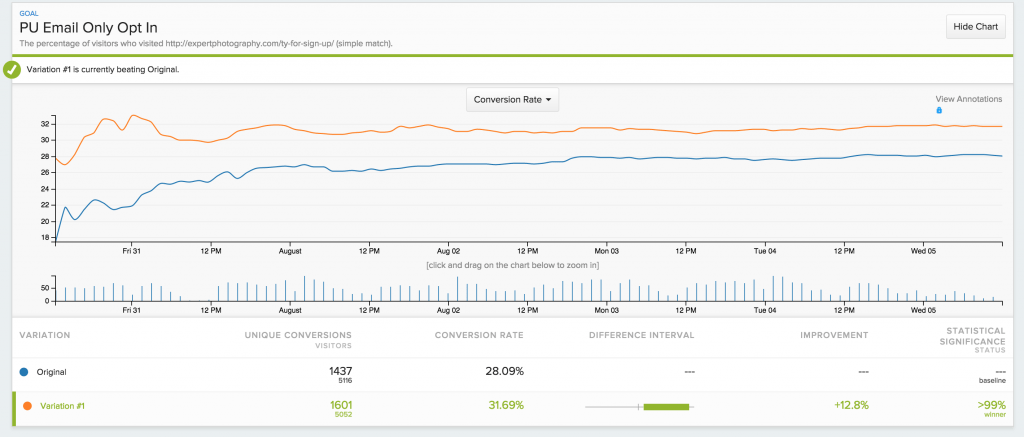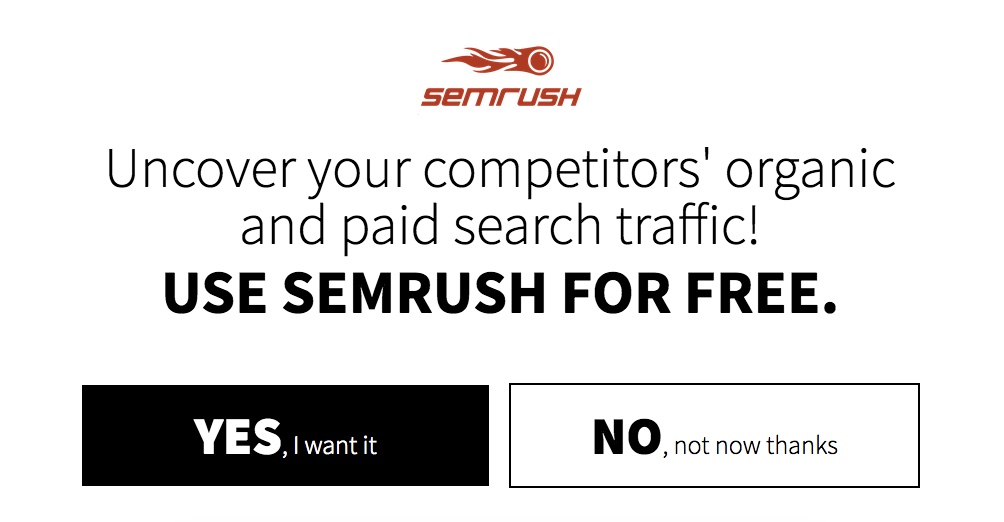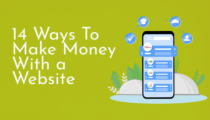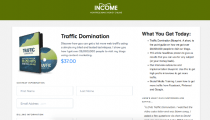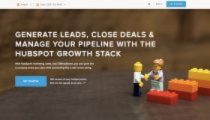
How To Increase Sales And Conversions in 2024
Welcome to our comprehensive guide on increasing your website sales and conversion rate.
This guide is designed to help you understand the common myths and mistakes that can hurt your website’s conversion rate. We will cover common myths you may have heard that make you think something increases conversions when it actually hurts your conversion rate. We will also look at common website mistakes that could be causing low conversion rates and provide insights on how to fix them.
In addition, we will provide you with five fast and effective fixes to increase website conversions and sales, along with pricing secrets that are guaranteed to boost conversions and income. Finally, we will wrap up the five best ways to increase sales in 2024.
By the end of this guide, you will clearly understand how to optimize your website for higher conversion rates and increase your revenue. So, let’s get started!
The easiest way for most people to increase sales from their website, is to increase conversions. In this post, I’m going to share with you our best tips for doing exactly that.
There’s no question that internet marketing nowadays is much more challenging than ever before. Although the technology and tools we have available to us are getting better and cleverer, everything else is also on the increase, much to our detriment: the cost of getting targeted, qualified traffic; the sheer amount and tenacity of the competitive environment; not to mention the continuous improvement of buyer sophistication – all contribute to making our business goals even further from our reach.
Thus, Conversion Rate Optimization (CRO) is no longer a nice-to-have, but an absolute must for us internet marketers, and we all know it. Some of you reading this might even be “closet conversion optimizers” – you’ve been secretly running tests on your own but because you haven’t been seeing improvements, you haven’t dared come out of the closet to brandish your impressive conversion rate increase to your peers. Meanwhile, the tiny sliver of hope you have left about gaining more bang out of your marketing buck is hanging by a delicate thread.
But it’s not your fault. Most likely, you’re getting paltry results because you’re implementing some changes that are actually working against you. And most likely, the changes you’d been making are stemming from false assumptions and ineffective methodologies.
So here I discuss the most common myths and misconceptions that many people have that actually hurt their conversion optimization efforts. If you haven’t run any conversion optimization tests yet (but want to do it or hire someone to do it for you), pay special attention as well because these revelations will save you a ton of time, heartache, and money.
Myth #1: It’s OK to test whatever I feel like testing because conversion optimization is all about creating magic buttons, following “best practices,” changing elements willy nilly, and then seeing what works best from there.
“It’s not converting too well because the design looks outdated. So let’s redesign the logo, the brand identity, and the entire flippin’ sales page. I’m sure the conversion rate will improve after that”, is a common demand we hear from first-time clients.
They can hardly be blamed though. At first glance, it does seem like CRO is all about changing elements like the size of call-to-action buttons or the color of headlines and seeing what sticks, but it actually goes much deeper than that.
Imagine that your website is a bucket. Think of your visitors as water going into the bucket. Now think of the things that are making your visitors not buy or leave your website as holes in your bucket (and there are many!).
You can’t optimize your conversion rate until you know exactly what’s causing the holes in your business bucket.
Your bucket is leaking, BIG time.
And the thing is that in real life, you can’t easily see where the damn holes are – and that’s the problem.
Redesigning elements of your website without first investigating what could be going wrong is just like getting a flashier, posher, different-colored (but also hole-infested) bucket. It can’t better serve you or your customers if you are still stuck with the same problems as before, and you are several thousand dollars worse off.
The solution is obvious: you must thoroughly investigate and find out the nature, location, and shape of the holes, and based on your findings, come up with the appropriate solutions to repair those leaks.
The conversion culprits could vary. Broadly speaking, it’s possible that:
- Your website is difficult to use or certain information is hard to find.
- Your copy is confusing or boring. Maybe it’s “too hypey”. Maybe it’s heartless, or maybe it’s simply flat-out inappropriate because it’s tapping on the wrong buyer motivations.
- Your website doesn’t look credible/trustworthy.
- Most of the traffic you’re getting is unqualified, or they’re just researching/“window shopping” at this point in time.
- Your visitors don’t trust you or believe your claims.
- Some of your visitors think your offer is not the best one (at this time) for them.
- You’re forcing your prospects to go through an unnecessarily frustrating process to get what they want, so they exit.
As you can see, each problem would require a solution unique to itself. There’s no one-size-fits-all plug available, unfortunately. Like it or not, the only time you’d be able to take the appropriate actions to improve your conversion rate is when you know exactly what’s preventing your prospects from taking the desired action.
Simply put, your decisions must be data-driven, not opinion-driven.
Myth #2: I don’t need to survey or talk to my customers/target market. I know them very well and I know exactly what’s going on in their minds. I dictate what changes should be made.
Myth #2 is very similar to Myth #1, but coming from a slightly different angle. While myth #1 is essentially stemming from the belief “it’s OK to make changes without doing any research first”, myth #2 is more about the false assumption that since you can imagine being your customers, why bother asking them anything at all?
Remember that regardless of the industry you’re in, or even if you’re selling just one type of product, you’re likely to be marketing to many different customer profiles or different market segments who naturally would then have different motivations.
Take a weight loss product as a classic example. An obese and hormonal teenage girl would have different motivations compared to overweight and heartbroken 49-year old male divorcee, or a 28-year old woman who just gave birth. Could absolutely know exactly how to think like each of these market segments effectively without asking them for feedback?
Communicate in a way that answers this primordial question for as many of your prospects as possible.
And that’s just the bit where we consider the buyers’ layers of motivation. I haven’t even mentioned different personalities or styles of processing information, like:
- Methodical – or the I-actually-read-all-the-fine-print anal type
- Spontaneous – or the just-gimme-the-bullet-points-please type
- Social – or the I’m-a-buy-based-on-what-other-people-say type
- Competitive – or the just-show-me-how-it’d-make-me-faster-richer-sexier-better-stronger-I-don’t-care-about-anything-else type.
The point is different types of people go to your website. If you really want your site to convert, it’s best to gather feedback from the very people you hope to serve – and use the market intelligence you’ve gathered to help you craft your next experiments.
Myth #3: Conversion Optimization is a matter of guessing what to test using my gut instincts.
Using your gut instincts could be a great tool when forming hypotheses to test, but don’t rely on it alone. For example, you might suspect that the reason why you’re not converting well is that you’re providing too many packages to choose from. That’s well and good, but don’t go about creating a “6 packages VS 3 packages” right away.
Apart from surveys and heatmaps, creating usability tests is another way to really get in the head of your target market.
What if the real problem is not the number of choices per se, but that your prospects are unsure which package is best for them to pick because the unique advantages of each package are unclear? If this is the case, then the appropriate test to conduct involves creating pages where the packages have clearer and easier-to-understand unique value propositions – NOT reducing the number of packages on offer.
Form your theories but do whatever’s needed to investigate and uncover the actual problems first, and then implement the appropriate experiment to find the possible best combination of solutions.
Myth #4: If I copy a great company’s website design, layout, color scheme, and words, I’ll enjoy the same high conversion rate.
If this is the case, then we can all just model all our websites after Schwan’s or Vitacost.com and we’d enjoy an over 24% conversion rate.
Conversion case studies are there not for you to copy exactly, but for you to gain insights from. Just because someone changed their call-to-action button from a green square to a red rectangle and gained a 16% lift in conversion doesn’t mean you’d enjoy the same lift if you implement the same change.
Myth #5: Conversion Optimization is all about making a webpage look great and look high-tech and all fancy. It has nothing to do with anything else.
I’m a sucker for intelligent, beautiful designs, but the design is not the end-all-and-be-all. In fact, there are many impressively designed websites that are not persuasive at all.
Design is just an element (and a superficial one at that) among many other elements that make up your website.
Design is just like hair, make-up, jewelry and clothes. You can dress someone up looking all snazzy and sophisticated, but at the end of the day, it’s still their personality, character, and the person they are inside that counts.
Similarly, sometimes what’s really needed in order to raise your conversion rate is not a website redesign, but changing an aspect of your business “inner game”. This could mean changing/rethinking your philosophy, your values, your product positioning, your brand strategy, your business processes, redefining your core competencies, restructuring your main offers, reworking your company culture, etc.
You have to be willing to change yourself and your business if you are really serious at dominating your market. At the heart of CRO is the principle of continuous improvement. This should cover every single thing in your business and your thinking, not just your website. Otherwise, the benefits you’d reap would be superficial and short-lived.
Creepy or genius? Clicktale is a tool that records visitor sessions. It’s just like looking over their shoulders as they use your website!
Myth #6: CRO is about manipulating as many visitors as possible to do what *I* want them to do: buy.
Of course, eventually, we want as many of our visitors to buy or perform whatever action is needed to make profits for our business. But there’s a subtle added later of depth to this dimension. But understand that some visitors go to your website with an intention other than buying or subscribing. Maybe they are there to find a specific article they read before, and want to share it, or they want to just plain marvel at your awesomeness and drool over your pictures which isn’t bad at all.
Imagine you’re selling software online. It comes in the standard and deluxe versions. You make more profit if you sell more deluxe versions, so you really should gear your entire website to getting people to buy the deluxe version. That’s just right, isn’t it?
Well, over the short term, yes it could make you more money, but it could bite you in the ass over the long term if that’s your sole focus.
If the standard version is the best fit for Joe’s current needs, then it’s your job to help Joe understand this and help him make a well-informed buying decision. Sure, you could have sold him the deluxe version and made more money, but what if he used it and got put off by the extra features he didn’t need? What if he felt duped and put up negative reviews online and encouraged others to never buy from you? (Reflect about this especially if you have a high refund rate or member attrition rate or high number of complaints from customers)
CRO is not about manipulation so that you make a sale regardless of what’s the best fit for your customer. Rather, it’s a win-win process, in which you find out exactly what would serve your prospects best given their unique situations, so that you could align your business to meet their needs, thus helping them get exactly what they were looking for.
Myth #7: The shorter the sales presentation, the better. (Or the shorter the sales copy/video, the better).
Not necessarily. In fact, there had been cases where longer sales presentations or longer sales pages had been tested to convert higher.
People who read your sales letter have questions, concerns, doubts and objections. In order to convert them into buyers, you must uncover all of their concerns and address them in the most effective way possible.
Don’t worry about the length of your sales presentation. The fact is that people who are really interested in what you’re offering will put in the time needed to digest your information. The crime is not long sales letters per se, but flat, boring, unpersuasive sales letters that fail to connect with and move your audience to act.
Is it worth eliminating the fluff? Absolutely. But don’t aim for brevity for brevity’s sake alone. Instead, aim for aligned persuasion.
3 Secret Pricing Tricks Guaranteed to Make you More Money
If you sell your services at a single set price, get prepared, because your business is about to level up.
It’s no secret the most successful companies give a variety of options to appeal to a broad spectrum of customer’s financial situations.
But what you may not realize is those price points are planned to subconsciously direct people to spend a set amount, whether they realize it or not.
At a spa, there’s a wide range of services between the 15 minute facial or the all day relaxation package.
You’re not just stuck with the option of lawn seats or VIP passes at a concert.
And many consultants, don’t just limit their services to the one hour phone call, or the $30,000 full-service training package.
Multiple price points with benefits and add-ons at each tier gives your client more options, and if you’re strategic about your price points, you can very easily guess what the majority of people are going to go for.
Pricing Trick Secret #1: Use Tiered Pricing to Play Ego against Logic.
Imagine for a moment you are considering buying SEO software.
You plan to blog regularly. Perhaps every day, at the very least a few times per week, and this software promises to boost your blog’s visibility by evaluating your articles for keywords, and give suggestions to improve your Google ranking.
You know you will use it at least a few times per week, and are estimating you’ll spend between $35 and $45 for it.
A click later, you see that the pricing options are:
Which do you choose?
If you said “professional,” well done. You did exactly what they wanted you to do.
Now despite the landing page design being very pointed in where you should click, you would have likely came to the same decision (the design just got you there sooner)
Why?
Their multi-tiered pricing creates a war in your brain between your primal instinct and your logical response to options.
The logical response says, “I’m one person… I clearly won’t need 300 evaluations a month. That’s far too much.”
But the primal instinct says, “I need more than the bare minimum to survive. I’m going to grow. I’ll need more next week. I need to stockpile, to prepare, ‘just enough’ won’t be enough.”
So why does simply offering more options create this response?
Because with a single price point a purchase decision can be either accepted or dismissed with a simple“yes” or “no.”
But when you bookend the choices, suddenly your customer is involved, however briefly, in imagining different scenarios for each level of ownership.
They start thinking, “What if the cheapest option isn’t enough?” They start seeing themselves as being unprepared because they bought the lowest-priced item.
Others are more optimistic.
They envision themselves achieving more and therefore justify paying more. They see themselves becoming more successful because they haven’t limited themselves to “just enough,” have room to move and grow.
Either way, the purchase has drama and more emotional investment when there are a limited set of options.
You can create these same subconscious, survival-based thought patterns in your clients by switching your pricing from a single option to offering different levels of pricing for your services.
Switching to a variety of options vs. a single price point is the first and most important step in guaranteeing more purchases.
Pricing Trick Secret #2: Give A Lot More for Slightly More Money.
To the majority of people, the two central options will be where their attention focuses immediately.
For these groups, the highest and lowest prices are briefly considered and immediately dismissed as being “too much” and “not enough,” which means the battle is in choosing between the the lower-middle and the higher-middle pricing options.
These folks spend the most amount of time on their purchase.
They take the time to time debate the pros and cons of spending the extra few dollars per month, or per level, so set pricing to make it simple for them.
Do so by offering a value multiple times higher than in the lower-priced option, without changing the price by the same ratio.
Back to our SEO example, by purchasing the Professional package for $47 per month, a customer will receive four times as many evaluations as they would for the next option down, the Publisher.
But the Professional price is not the Publisher price, quadrupled.
Instead, it’s not even doubled. It’s an affordable step up with an immense added benefit.
Make it painfully, starkly clear that the higher-midrange price is where the really good deal is found.
Logic will win out in nearly all cases, as clients justify to themselves the great bargain they just got by buying from you.
Pricing Trick Secret #3: There’s always someone who only buys the best.
We all know someone who enjoys spending money.
It’s more than a necessity, it’s a symbol of their self-esteem. When it comes down to it, money equals status and self importance, and that matters a great deal to a large percentage of business people.
You may never know it, but even Joe Handyman in the flannel shirt is saving his dollars for the creme de la creme of cars, tools, and blueprints.
Some folks who are pennypinchers at home will indulge on their business, because their work is their passion, and that is how they justify high-cost items.
Your highest price point should be something that seems indulgent.
The folks who want the best, who gauge value based on cost, won’t take you seriously if “just anyone” could afford it.
They are out there, and some have already passed you by.
It’s all about the implications made by their purchase, and because they feel that more money means better quality, and they want only the best.
In your pricing structure, include a best-of-the-best, enterprise-level price point and you will convey the sense that you and your services are more than worth their time.
On the flip side, you want your lowest price to be reasonable, profitable for your company and helpful to your clients, but ultimately not a huge gamble on their part.
Thrifty clients want to feel that if their investment is a total waste of money, they haven’t lost too much. They want to get just enough because they plan to be frugal with their usage and get every bit of functionality or information from you or your product that they can.
Pricing Tricks Bonus 1 – Pricing Techniques That Will Make You More Money
We like the Three Pronged Pricing Technique from Neville Medhora (includes Templates, Examples, and a Generator).
This video explains more:
Pricing Tricks Bonus 2 – It’s not that difficult.
Offering your services on a tiered price structure isn’t as difficult as you think.
Consider what it would take for you to go above and beyond all expectations, I mean everything you do and roll that up into one bundle to create your highest price point. Remember: it should offset a considerable amount from your next highest price point.
From there, take out the additional services that go above and beyond, leaving a really good option. This will be your third highest pricepoint, and likely what the majority of your business will be.
Then for the last two subtract services until you are left with just the very basic service at the bottom.
Of course, there is no “Copper” package, but it’s easy to see how a simple wordpress setup could be the bottom tier option in this scenario.
Our Favorite Ways To Increase Sales and Conversions
#1. Increase Sales By Adding Upsells to Current Products
Most decent online marketers make as much money on the back end as they do on the front end.
By that I mean, if they sell a $97 product, when a customer goes through the checkout process, they spend at least another $97 on other products before they complete their purchase.
When I first heard about this, I thought it was an unbelievable statistic. Surely you can’t increase sales by 100% by doing something so simple.
We couldn’t ignore something that sounded so promising.
The first upsell we ever created was for PopUp Domination. Customers would buy our software, then during the checkout process, get offered purchasing options for multi-site licenses and additional popup designs. Incredibly, over night we were able to increase sales by 2x!
It makes perfect sense. The customer is already in buy-mode, they have already got their credit card out and ready to buy something. It’s impulse. They see something else they like that’s related and all they have to do is click one extra button.
Our good friend Yanik Silver had a rule of thumb I like to quote:
“60% of people should take your first upsell if it is priced at 60% of the front-end product price.”
That would be a good place to start for most people.
So for example; if your front end product sells at $49, an upsell priced at $27 should convert well.
The only problem we have ever had with creating upsells is the technical side of things. The first time we did it, we had to ask customers to re-enter their credit card details for every upsell they wanted to buy.
No doubt this had a negative effect on conversion. Although we were still able to achieve that industry standard of making just as much from our upsells as the front end offer.
We are not tech guys and even asking a programmer to set something up like this can be a pain because it’s just not something people have much experience with.
However things have moved along quite a lot since we first played with setting up upsells.
Our current checkout software SamCart, allows you to create upsells in seconds. All you have to do is insert the sales video code, set the price and it’s done.
Customers go from purchasing a product, to upsell page 1, upsell page 2 and finally the download page.
Here’s how we setup our upsells:
- Click upsells on the left hand side of your SamCart dashboard and then select funnels from the drop down menu.
- Click “new funnel”, add your funnel name and a short description, then click “create funnel”.
- Select how many upsell offers you’d like to add from your product list and then select “enabled.” You’ll have the option to add up to 5 upsells and 5 downsells.
#2. Increase Sales By Improving Your Checkout Page
The checkout page is a huge part of the sales funnel process, and is often forgotten or brushed off.
I remember 6 years ago reading a forum thread about the beta stage of Clickbank checkout page design. They allowed premier users (top earners) to customize the design of their checkout page from the default 1 style design. Users saw as much as 3x higher conversions by simply matching the header and background color to the one used on their sales page.
Checkout pages should have the following characteristics:
- Sales copy reminding customers of exactly what they’re getting.
- Branding that matches your main site.
- Product image.
- Clear instructions.
- Satisfaction Guarantee.
Another top tip to increase sales is to remove any checkout fields that are not 100% required. The easier it is to sign up and pay, the higher your conversions will be.
Our checkout pages are hosted and setup with SamCart, which makes the process incredibly easy.
#3. Increase Sales by Adding a PopUp Opt-in Box
If you make money from email marketing, then I would be surprised if you didn’t already have a popup on your website, but incase you don’t, we recommend you try adding OptiMonk to your websites.
When we first added a popup to IncomeDiary, our email subscriber rate increased by over 500%! Never have we seen conversion rates like that before.
Make sure to read our OptiMonk review to learn how we are using it to boost our sales and traffic.
#4. Launch an Affiliate Program
Having an affiliate program has allowed us to do $x,xxx,xxx in sales with zero advertising budget.
Affiliate programs give you the ability to track and pay people on commission for selling your products. Take PopUp Domination as an example. We let customers promote our sales page with a special tracking link. If they convince someone to click the link and they end up buying from us, we give that person a cut of the money for bringing us the business. This is all handled effortlessly by our merchant.
This is a great, low risk way to drive traffic to your sales pages. You only have to pay for the traffic that converts.
Affiliate programs are among the best ways to incorporate passive income streams into your business. Once your sales page is setup and you have affiliates promoting your products, you don’t have to do anything to drive traffic and make sales.
#5. Setup Autoresponders
One of the best ways to increase sales (and passive income), is to have an autoresponder.
An autoresponder automatically sends emails to subscribers that you have setup before hand. We use them for all of our mailing lists. When you subscribe to our list, you will automatically receive an email from us. Then again the next day and again two days later and so on, until all 30 emails have been sent. This means you can write a sales email today, then in the weeks to come when someone subscribes, they’ll get that email automatically, read it and hopefully buy whatever you are selling.
As far as we are concerned, the more autoresponder emails the better. We regularly look back over past emails we’ve sent to our lists, copy our most successful ones and add them to our autoresponder.
Autoresponders have been one of the most powerful passive income streams we have ever used. Everyone should have a mailing list and everyone should be sending emails. It doesn’t matter if you are a blogger, software owner, if you sell eBooks or want more clients.
To get started, we recommend and use Aweber for our email marketing! They currently have a $1 trial.
#6. Increase Sales Page Conversions With Split Testing
Split testing is crucial for making money online and is something all successful marketers do on a regular basis. Most have tests continually running.
A split test is when you split your web traffic between multiple pages to see which one converts higher. For example, think of any sales page, now duplicate it, so you have two exact same versions of this page. Change one of the pages so that the buy button is a different colour. Now send 50% of your traffic to each of these two pages. After 100 sales, see which one made the most money.
There is a lot you can test. And you would be surprised how much small things can add up. Here is a list of things to start testing:
- Headlines text, colour, font, size
- Background colours
- Images
- Videos
- Videos Vs Images
- Video Vs Text
- Short Vs Long
- Price
- Scarcity
- What you are offering
- Name of your product
- Testimonials
- Guarantee
I could go on for quite some time… you can test EVERYTHING!
Both SamCart and OptimizePress allow us to split test our checkout pages as well as sales pages to ensure the highest possible conversions regardless of the product.
#7. Don’t Keep All Your Eggs In One Basket.
There are quite a few reasons why this saying is true for online business.
Firstly, if you only have one income stream, then you are screwed if for whatever reason it disappears. And don’t think that’s impossible because it’s happened thousands of times, to people far smarter then you or I. Let me give you an example:
Say you are a blogger and have 5 different income streams for your blog. You are making a lot of money. You should feel safe right?
NOPE.
Not if all your traffic comes from one source. Often I’ve heard horror stories of top bloggers being slapped by Google and losing all their traffic, therefor losing all their income.
You can’t set and forget about a business if it has a foundation like this. Diversify and make sure you have multiple traffic sources such as Search Engines, Social Media, Podcasting, Email Marketing and so on.
Ok, let’s put traffic aside and focus on blog monetization techniques.
Say your site is getting great traffic and it’s all good, but you only make money from Google Adsense.
Well Google can come along and ban you for 1 of a million terms violations. Again you are screwed.
Ok, it’s 2024, not many people do that. How about you sell an eBook online and all your income comes from that. You are doing great, in fact this month is your best month ever, you made $30,000!
Perfect, no troubles, right?
WRONG!
Your merchant shuts you down or puts you on hold because it’s worried you may be doing something fraudulent. Countless times I’ve heard online marketers moan about how their PayPal accounts have been put on hold for months and they can’t withdraw money. Why? Because PayPal would rather be safe than sorry. Although in most cases, PayPal eventually took these people off hold, how would you deal with not being able to access your money for months on end?
Another reason not to keep all your eggs in one basket is it just isn’t a smart business decision.
Take IncomeDiary for example. Say you are coming to the site today and the only adverts we have up are for our PopUp Domination software. If you already have a copy of it, then you can’t buy anything. These adverts are irrelevant. People love choice and you need to be able to show them multiple things they can buy to have the best chance of making a sale.
Like life, variety is key to business.
You must diversify.
There is so much you can do.
So many opportunities you are not taking advantage of yet.
I hope today’s post has shown you that.
There you have it, our top ways to improve your website, to increase sales and conversions. Enjoy.
Read more: ‘14 Ways To Actually Make Money From a Website!’
More Top Tips On Improving Website Conversions and Traffic


